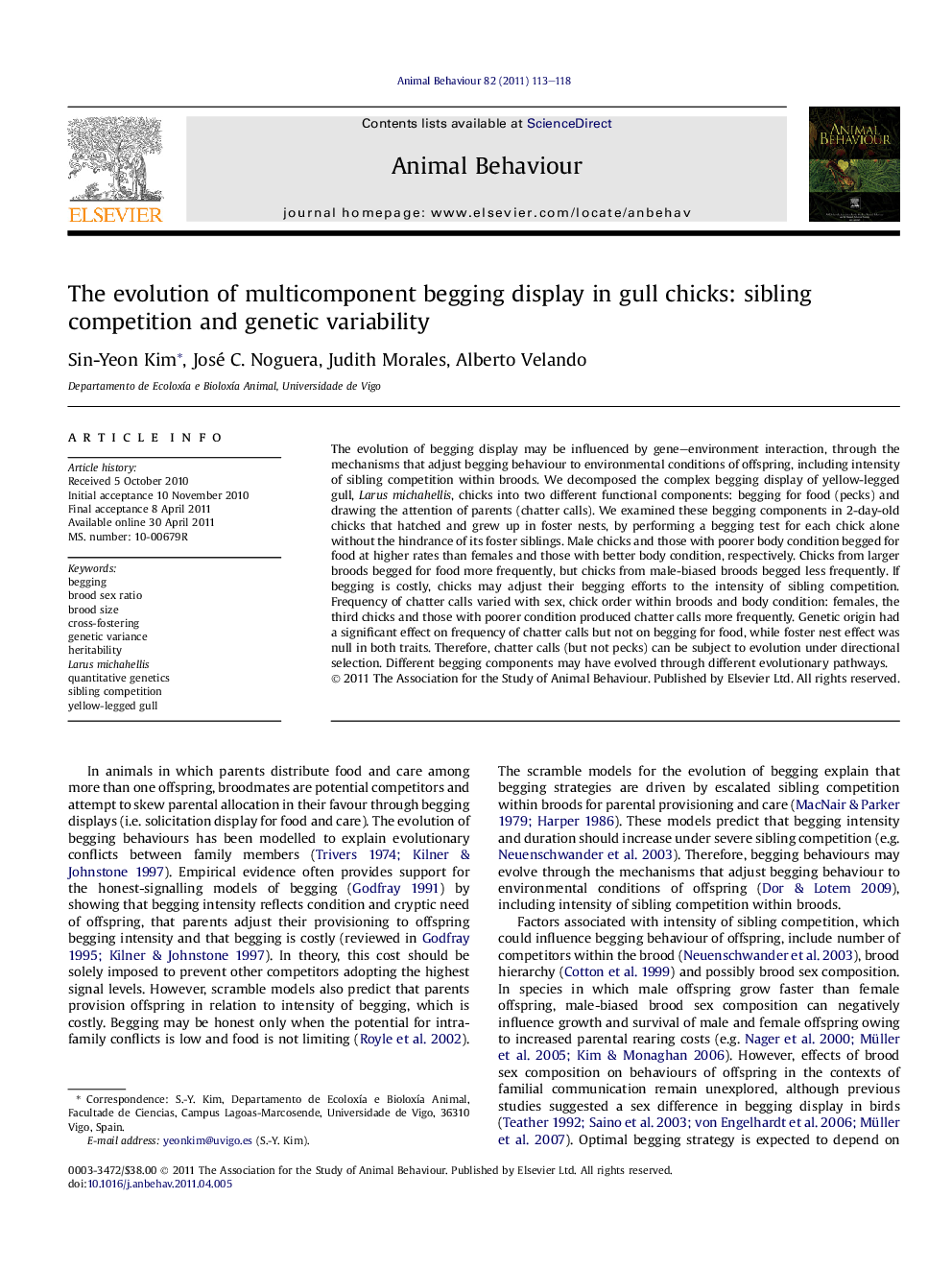| Article ID | Journal | Published Year | Pages | File Type |
|---|---|---|---|---|
| 2417032 | Animal Behaviour | 2011 | 6 Pages |
The evolution of begging display may be influenced by gene–environment interaction, through the mechanisms that adjust begging behaviour to environmental conditions of offspring, including intensity of sibling competition within broods. We decomposed the complex begging display of yellow-legged gull, Larus michahellis, chicks into two different functional components: begging for food (pecks) and drawing the attention of parents (chatter calls). We examined these begging components in 2-day-old chicks that hatched and grew up in foster nests, by performing a begging test for each chick alone without the hindrance of its foster siblings. Male chicks and those with poorer body condition begged for food at higher rates than females and those with better body condition, respectively. Chicks from larger broods begged for food more frequently, but chicks from male-biased broods begged less frequently. If begging is costly, chicks may adjust their begging efforts to the intensity of sibling competition. Frequency of chatter calls varied with sex, chick order within broods and body condition: females, the third chicks and those with poorer condition produced chatter calls more frequently. Genetic origin had a significant effect on frequency of chatter calls but not on begging for food, while foster nest effect was null in both traits. Therefore, chatter calls (but not pecks) can be subject to evolution under directional selection. Different begging components may have evolved through different evolutionary pathways.
